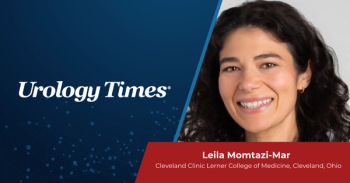
Thomas Powles, MBBS, MRCP, MD, on efficacy of sasanlimab plus BCG in BCG-naïve NMIBC
The investigators assessed EFS data from the CREST trial based on subgroups stratified by disease stage.
Topline data from the phase 3 CREST trial (NCT04165317) showed that the investigational combination of sasanlimab plus BCG significantly improved event-free survival (EFS) vs BCG alone in patients with BCG-naïve high-risk non–muscle invasive bladder cancer (NMIBC).
At the
Powles is a professor of genitourinary oncology and director of the Barts Cancer Centre at St. Bartholomew’s Hospital in London, UK.
Overall, data from the exploratory analyses showed that the combination of sasanlimab plus BCG improved EFS in patients who had CIS or T1 tumors at the time of randomization.
In the CIS subgroup, 36-month EFS was 83% among patients who received sasanlimab plus BCG (induction and maintenance) vs 71.8% in patients who received BCG alone (HR, 0.53; 95% CI, 0.285 to 0.982). Likewise, in patients with T1 disease, 36-month EFS was 81.3% in patients who received sasanlimab plus BCG (induction and maintenance) vs 72.2% in patients who received BCG alone (HR, 0.63; 95% CI, 0.406 to 0.963).
However, Powles noted some overlap between the confidence intervals in the ITT population, suggesting that the combination of sasanlimab plus BCG is working across the broader group.
The investigators also looked into PD-L1 as a potential predictive biomarker, but the data showed that PD-L1 expression was actually lower in the CIS cohort.
Based on these data, Powles concluded, “Overall, I think it's fair to say that sasanlimab plus BCG works to prevent events in non–muscle invasive BCG-naive urothelial cancer, which is great. The drug’s associated with about 10% to 15% chance of long-term side effects, and there's a risk/benefit ratio to be had there. When we look, we can find enrichment in some subgroups, but it's not complete. It does appear to be working across the board. I think we do need to identify biomarkers associated with response, but sadly, PD-L1 doesn't seem to be that.”
REFERENCE
1. Powles T, Shore N, Bedke J, et al. Sasanlimab in combination with bacillus Calmette-Guérin (BCG) in BCG-naive, high-risk non–muscle-invasive bladder cancer (NMIBC): Event-free survival (EFS) subgroup analyses based on disease stage from the CREST study. J Clin Oncol. 2025;43 (suppl 17; abstr 4517). doi:10.1200/JCO.2025.43.16_suppl.4517
Newsletter
Stay current with the latest urology news and practice-changing insights — sign up now for the essential updates every urologist needs.


















